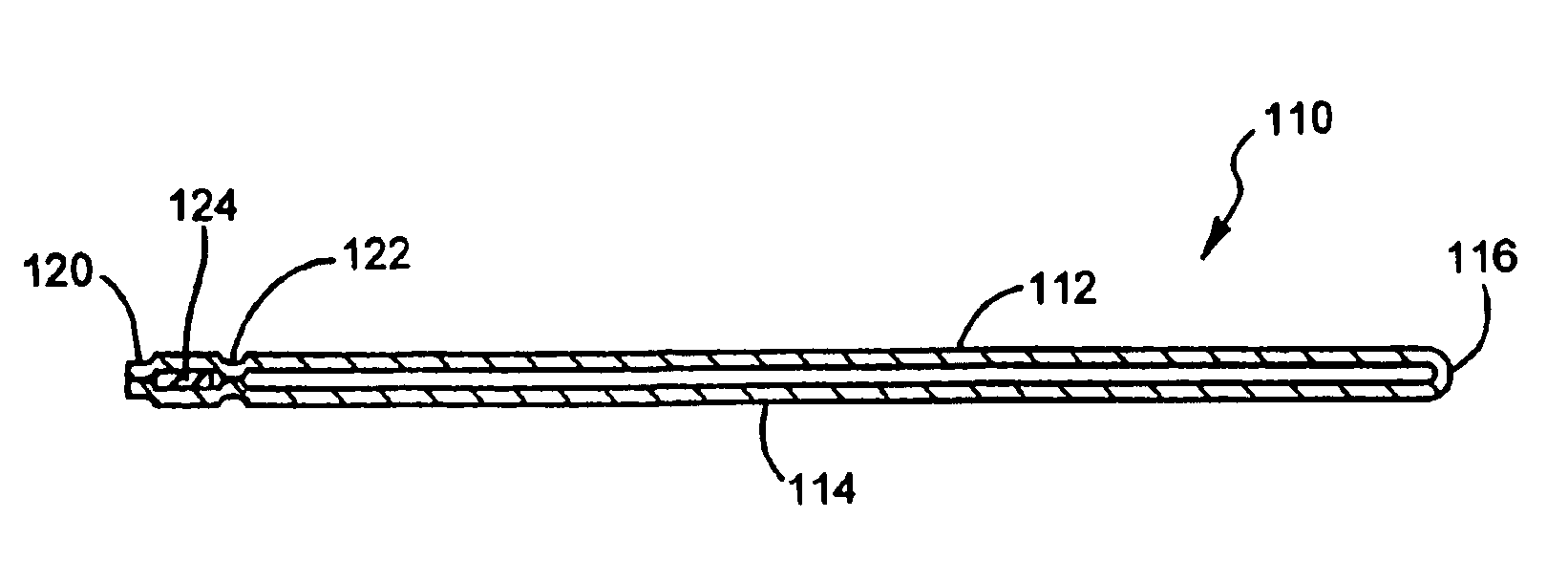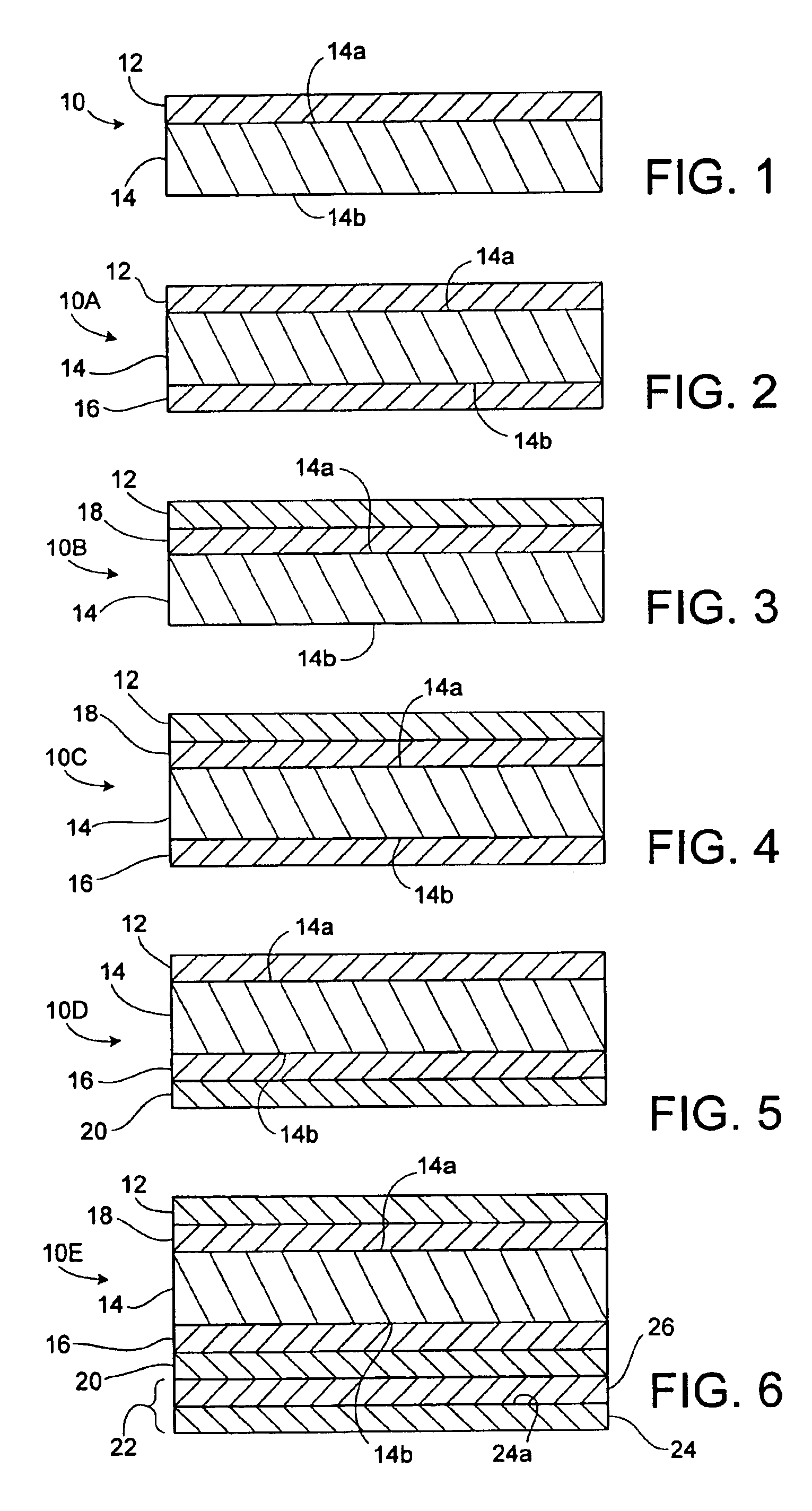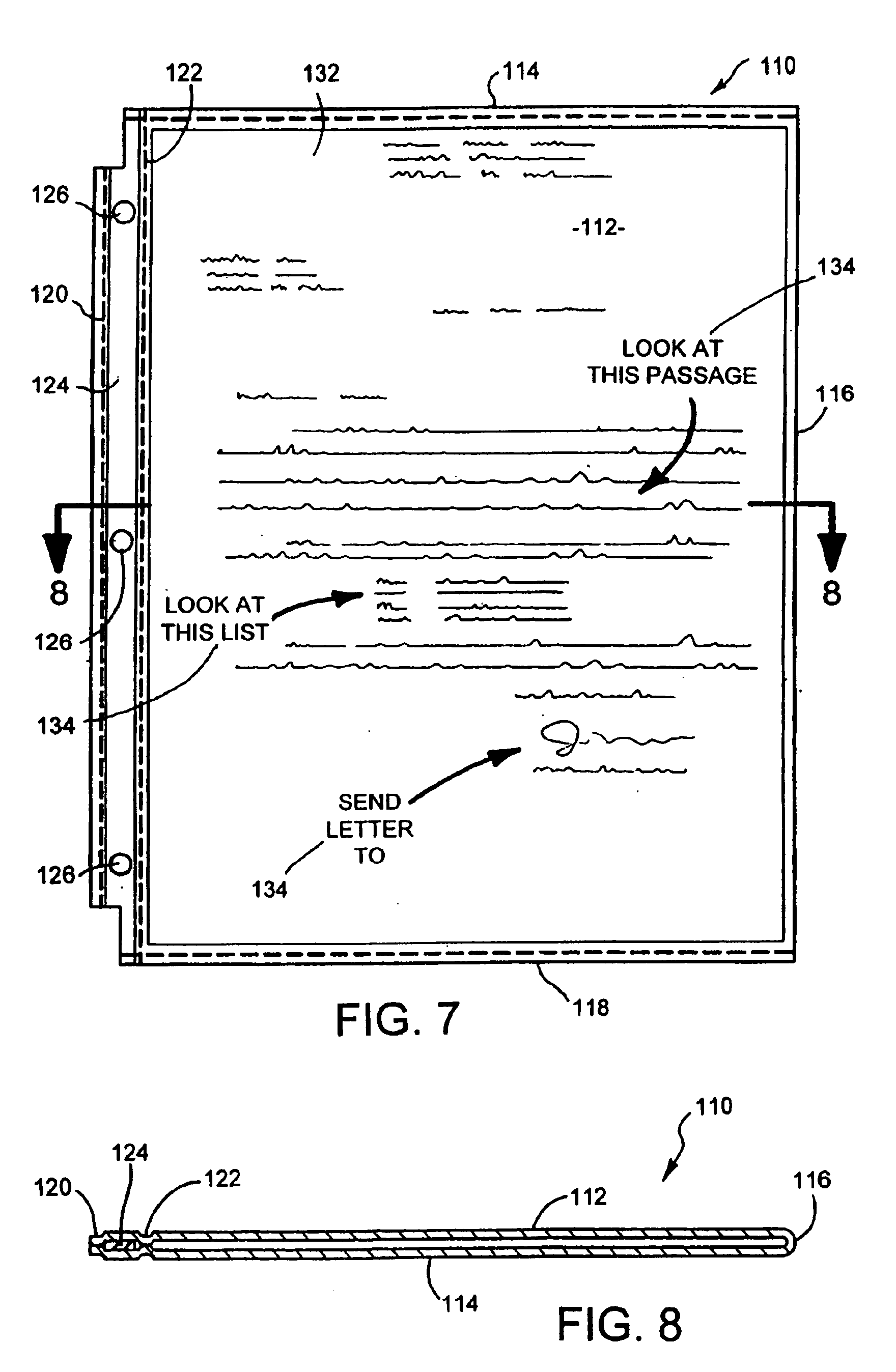Water-absorbent film construction
a technology of water-absorbing film and film structure, which is applied in the field of water-absorbing film construction, can solve the problems of dissolution of such films, the brittleness of 2-oxazoline polymers, and the poor mechanical properties of polymers formed into solid articles such as films, and achieve the effect of adding strength and/or dimensional stability
- Summary
- Abstract
- Description
- Claims
- Application Information
AI Technical Summary
Benefits of technology
Problems solved by technology
Method used
Image
Examples
example 1
A water-absorbent film construction corresponding to film construction 10A in FIG. 2 is coextruded. The overall thickness of the film construction is 3.2 mils. The composition and thickness of each of the layers is as follows:
Water-absorbent film layer 12 (0.46 mil):Aquazol 500 (product of Polymer Chemistry70.0%Innovations, Inc. identified as poly (2-ethyl-2-oxazoline) having a molecularweight of 500,000, a polydispersity in therange of 3-4, and a kinematicviscosity of 60-80 cSt)Bynel CXA 2002 (product of DuPont identified15.0%as anhydride modified ethylene vinylacetate adhesive resin)DS6D81 (product of Dow identified as14.0%ethylene-propylene copolymer)Polybatch ABPP05SC (product of A. 1%Schulman Inc. identified as a concentratecontaining 5% amorphous silica dispersedin an ethylene-propylenecopolymer)Base Layer 14 (2.28 mil)5A97 (product of Dow identified as a polypropylene 100%homopolymer)Skin Layer 16 (0.46 mil)DS6D8191.5%Sper 6 (product of A. Schulman Inc. 4.5%identified as a c...
example 2
A water-absorbent film construction corresponding to film construction 10B in FIG. 3 is coextruded. This film is useful as a water absorbing anti-static surface film for non-pressure sensitive adhesive applications. It is also useful as a non-skid or non-slip printable film for use with floor tile. This film can be used as an adhesive for use with paper laminates. The overall thickness of the film construction is 3.00 mils. The composition and thickness of each layer is as follows:
Water-absorbent film layer 12 (0.30 mil)Aquazol 50075.0%TC120 (product of ExxonMobil identified24.0%as an ethylene methyl acrylatecopolymer)Polybatch ABPP05SC 1.0%Tie layer 18 (0.30 mil):TC12050.0%5A9750.0%Base layer 14 (2.40 mil):5A9795.0%Polybatch ABPF05SC 2.5%Sper 6 2.5%
example 3
A water-absorbent film construction corresponding to film construction 10C in FIG. 4 is coextruded. This film is useful as a water absorbing anti-static surface film for pressure sensitive adhesive applications. It is useful as a non-skid or non-slip printable film for floor tile. This film can also be used as an adhesive for use with paper laminates. The overall thickness of the film construction is 3.00 mils. The composition and thickness of each layer is as follows:
Water-absorbent film layer 12 (0.30 mil)Aquazol 50075.0%TC12024.0%Polybatch ABPP05SC1.0%Tie layer 18 (0.30 mil):TC12050.0%5A9750.0%Base layer 14 (2.10 mil):5A9770.0%TC12030.0%Skin layer 16 (0.30 mil)5A9750.0%TC12050.0%
PUM
| Property | Measurement | Unit |
|---|---|---|
| thickness | aaaaa | aaaaa |
| thickness | aaaaa | aaaaa |
| thickness | aaaaa | aaaaa |
Abstract
Description
Claims
Application Information
 Login to View More
Login to View More - R&D
- Intellectual Property
- Life Sciences
- Materials
- Tech Scout
- Unparalleled Data Quality
- Higher Quality Content
- 60% Fewer Hallucinations
Browse by: Latest US Patents, China's latest patents, Technical Efficacy Thesaurus, Application Domain, Technology Topic, Popular Technical Reports.
© 2025 PatSnap. All rights reserved.Legal|Privacy policy|Modern Slavery Act Transparency Statement|Sitemap|About US| Contact US: help@patsnap.com



